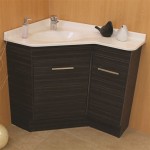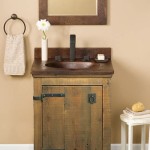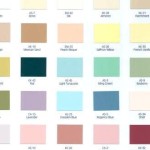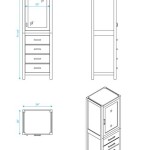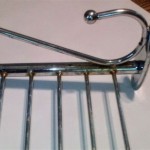How To Get Mold Out Of Bathroom Ceiling
Bathroom ceilings, due to their frequent exposure to moisture and humidity, are prone to mold growth. This unsightly and potentially harmful fungus can proliferate quickly if left unchecked. Addressing mold effectively requires a thorough understanding of the causes, the appropriate cleaning methods, and preventative measures.
Identifying the Source of Moisture
Before attempting mold removal, it is crucial to identify and address the root cause of the moisture problem. Ignoring this step will lead to recurring mold growth. Some common culprits include:
- Leaking pipes
- Inadequate ventilation
- Roof leaks
- Condensation from hot showers
Safety Precautions
Mold exposure can pose health risks, especially to individuals with respiratory sensitivities. Taking the following safety precautions is essential prior to commencing any mold removal process:
- Wear protective gear: This includes gloves, safety glasses, and an N95 respirator mask.
- Ventilate the area: Open windows and doors to ensure adequate airflow.
- Protect surrounding surfaces: Cover furniture and flooring with plastic sheeting.
Cleaning Solutions for Mold Removal
Several effective cleaning solutions can be utilized to remove mold from bathroom ceilings. The choice depends on the severity of the mold infestation and the type of ceiling material.
- Bleach Solution: A diluted bleach solution (one part bleach to ten parts water) is a powerful disinfectant effective against most mold types. However, it should not be used on porous surfaces.
- Vinegar: Undiluted white vinegar is a milder, natural alternative to bleach. While less potent, it's effective against many mold species and safe for porous surfaces.
- Commercial Mold Cleaners: Various commercial mold removal products are available, offering specialized formulations for different surfaces and mold types. Always follow the manufacturer's instructions carefully.
- Baking Soda and Water Paste: A paste of baking soda and water can be applied to the affected area, left for a few minutes, and then scrubbed away. This is a gentle yet effective method for light mold infestations.
Mold Removal Techniques
The chosen cleaning solution should be applied using appropriate techniques to ensure thorough removal and prevent damage to the ceiling. Here are general steps:
- Apply the cleaning solution: Spray or dab the chosen solution onto the moldy area, ensuring complete coverage.
- Allow the solution to dwell: Let the solution sit for the recommended time according to the product’s instructions or general guidelines, usually 10-20 minutes.
- Scrub the affected area: Gently scrub the moldy area using a soft-bristled brush, sponge, or cloth.
- Rinse thoroughly: Rinse the area with clean water to remove any remaining cleaning solution and mold debris.
- Dry the area completely: Thorough drying is crucial to prevent future mold growth. Use a fan or dehumidifier to accelerate the drying process.
Dealing with Porous Ceiling Materials
Porous materials like drywall and ceiling tiles are more susceptible to mold penetration. If mold growth is extensive, it may be necessary to replace these materials. Here are some considerations:
- Assessment: Determine the extent of mold penetration. Surface mold can often be cleaned, but deep penetration may require replacement.
- Removal: Carefully remove and dispose of affected materials, wearing appropriate protective gear.
- Replacement: Replace the damaged materials with new, mold-resistant options.
Preventing Future Mold Growth
Once the mold is removed, implementing preventative measures is essential to prevent recurrence. Focus on controlling moisture and maintaining proper ventilation.
- Improve Ventilation: Install or upgrade exhaust fans to remove excess moisture during and after showering.
- Control Humidity: Use a dehumidifier to maintain optimal humidity levels, ideally below 50%.
- Repair Leaks Promptly: Address any leaking pipes, faucets, or roof leaks immediately to prevent water accumulation.
- Regular Cleaning: Regularly clean the bathroom, paying close attention to areas prone to moisture, such as the ceiling, shower walls, and grout.
- Use Mold-Resistant Paint: Consider using mold-resistant paint for bathroom ceilings and walls to inhibit future mold growth.
Professional Mold Remediation
For extensive or recurring mold infestations, it's advisable to consult a professional mold remediation specialist. They possess the expertise, equipment, and experience to handle complex mold issues safely and effectively.
- Assessment: Professionals conduct thorough inspections to determine the extent and type of mold present.
- Containment: They implement containment measures to prevent the spread of mold spores during the remediation process.
- Remediation: They employ specialized techniques and equipment to remove mold safely and effectively.

Bathroom Ceiling Mold Removal When To Clean Call Branch Environmental

Mold On Bathroom Ceiling How To Clean Off

How To Get Rid Of Mold On Your Bathroom Ceiling Aqa

Mold On Bathroom Ceiling How To Clean Off

Mold On Bathroom Ceiling How To Remove From

How To Remove Black Mold From A Bathroom Ceiling

How To Get Rid Of Mould From Your Ensuite Ceiling Independent Ie

Cleaning Mold From Bathroom Ceilings Like A Pro Lovetoknow

Black Spots On The Bathroom Ceiling Flood Water Damage Honolulu Oahu Hawaii Md Restoration

Ceiling Mold Growth Learn The Cause And How To Prevent It Environix
Related Posts
